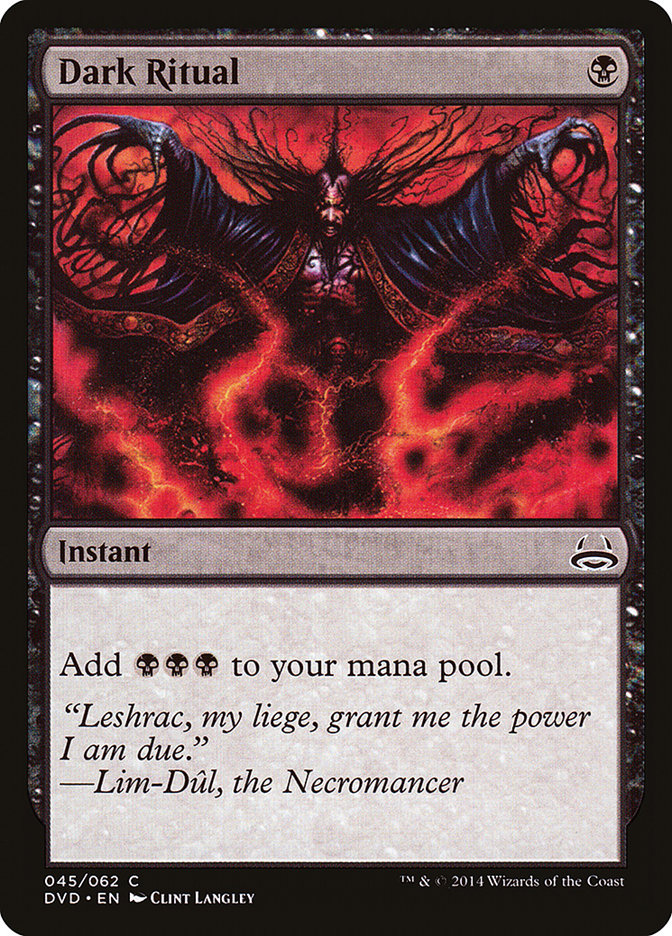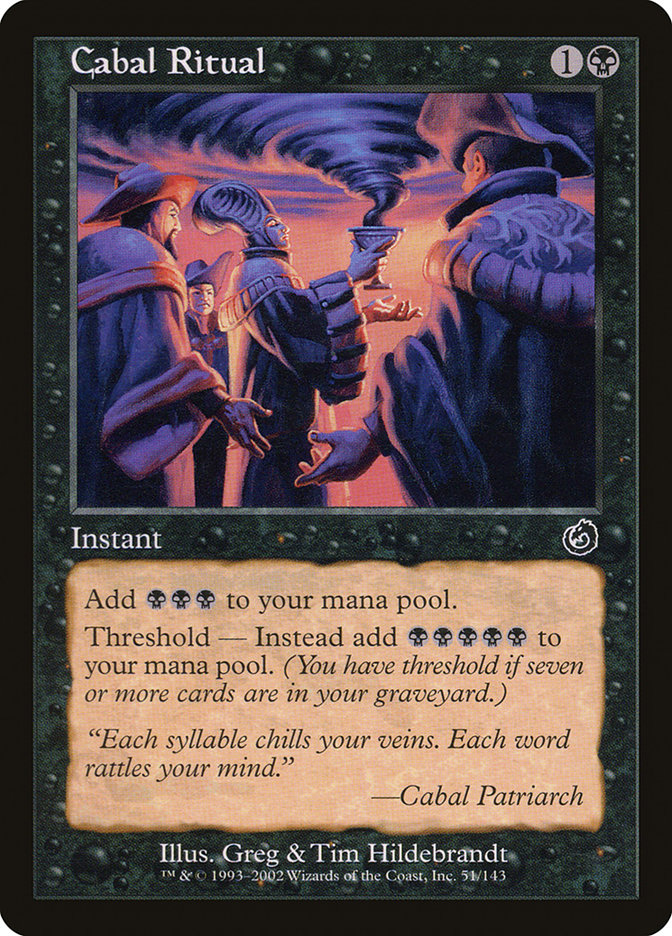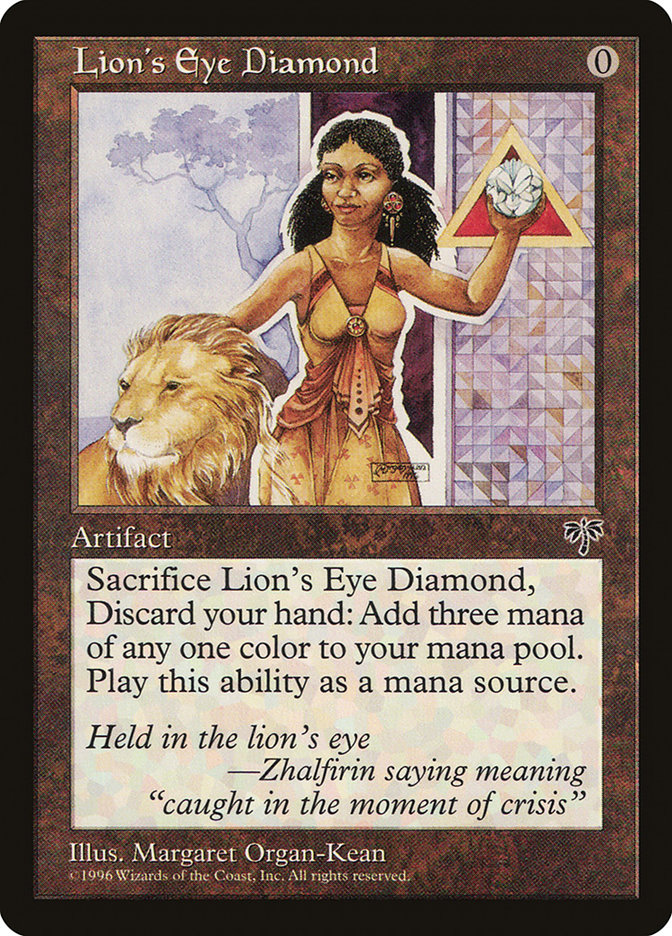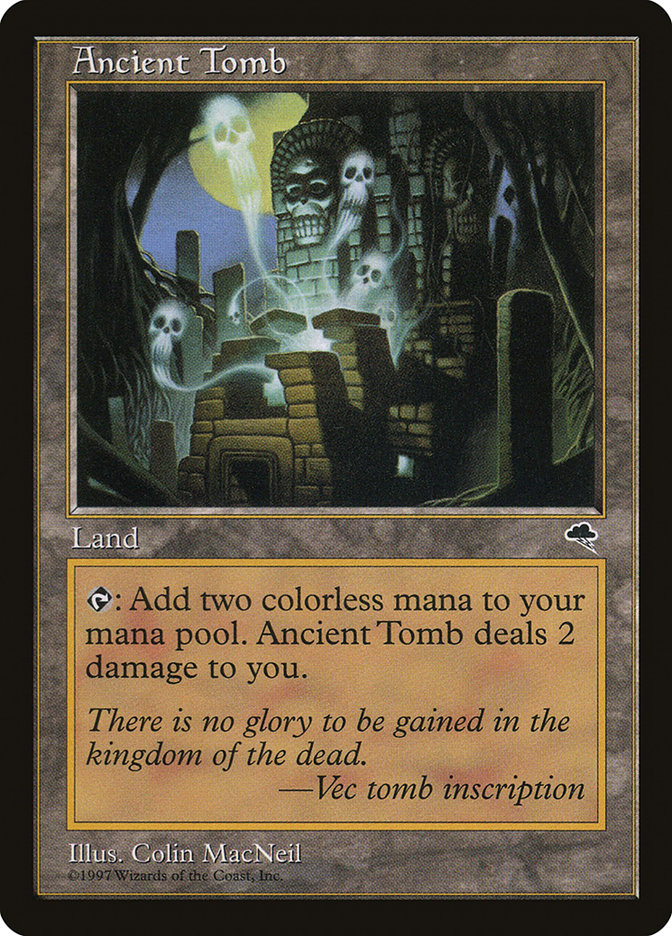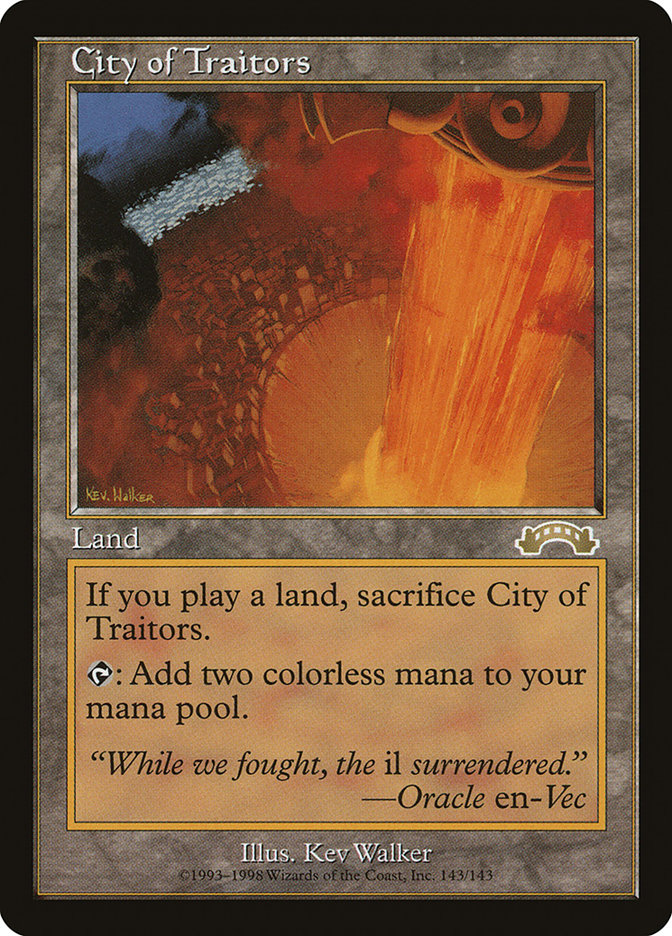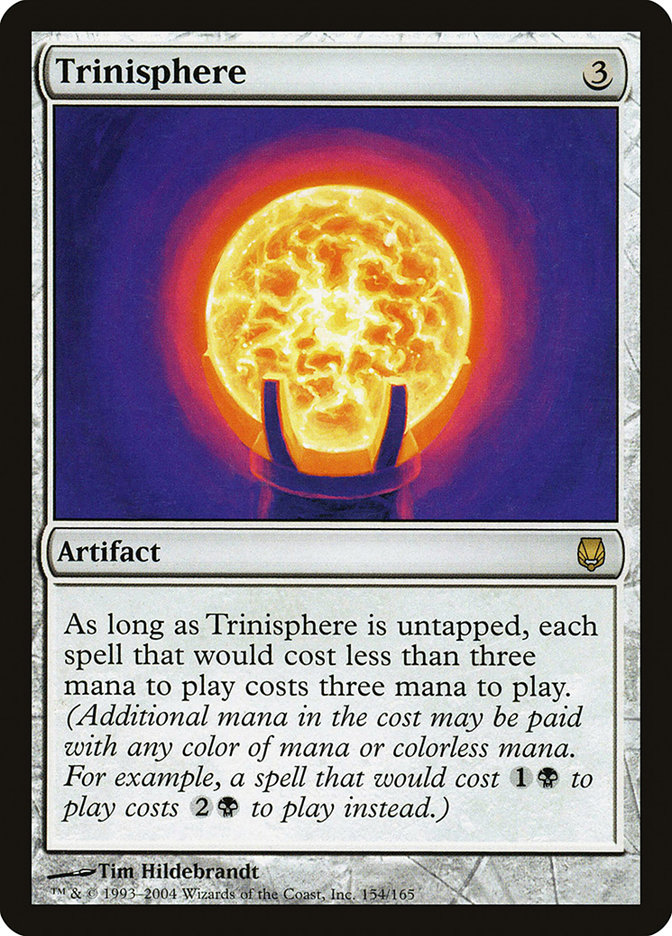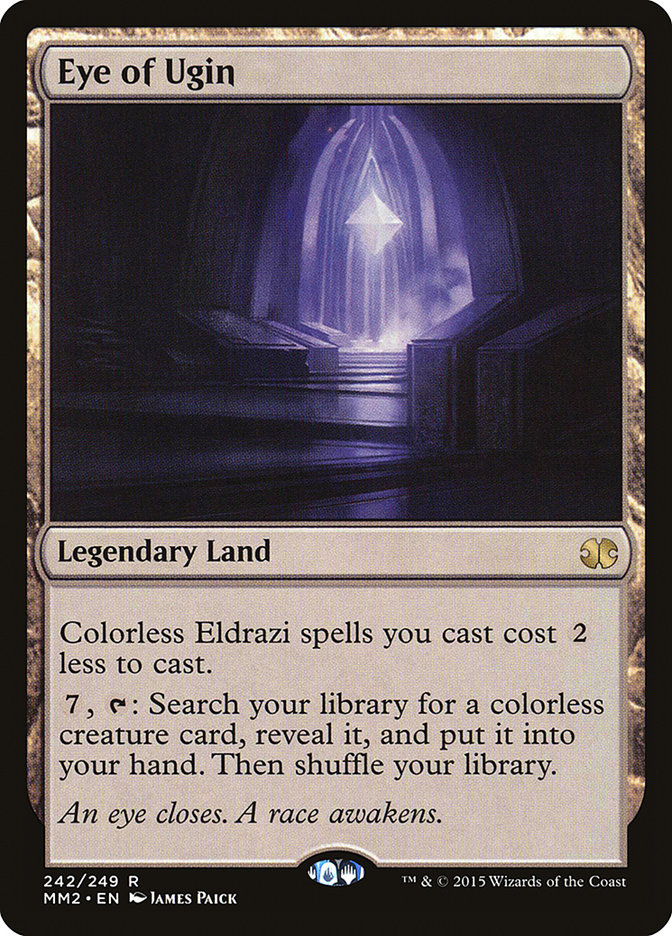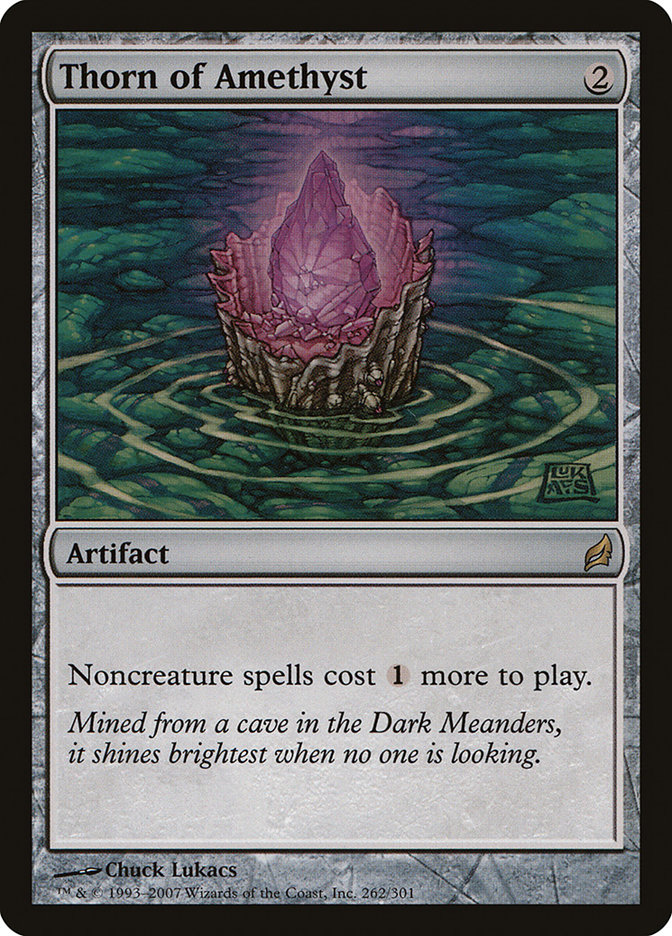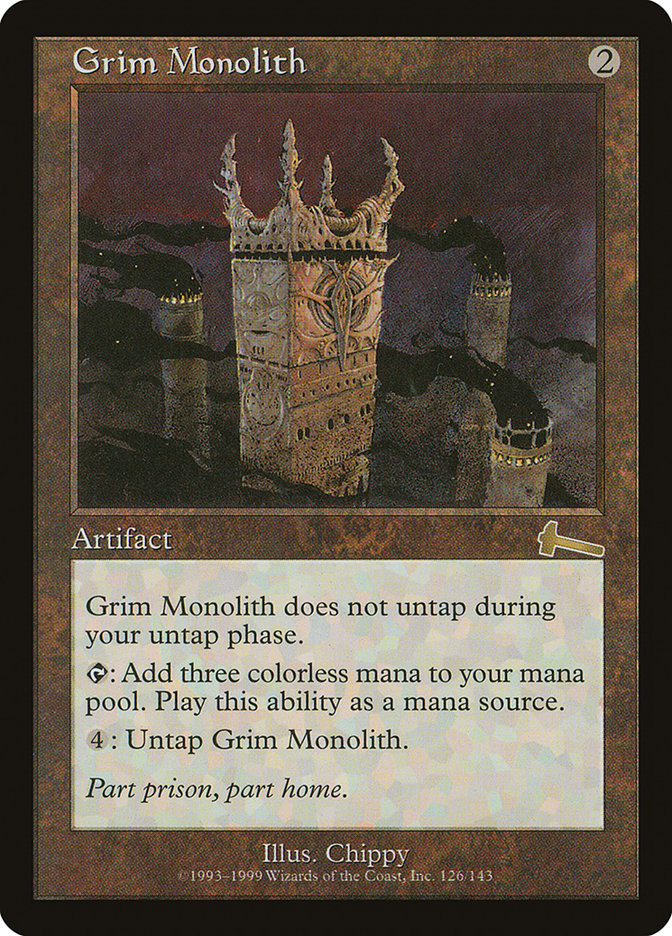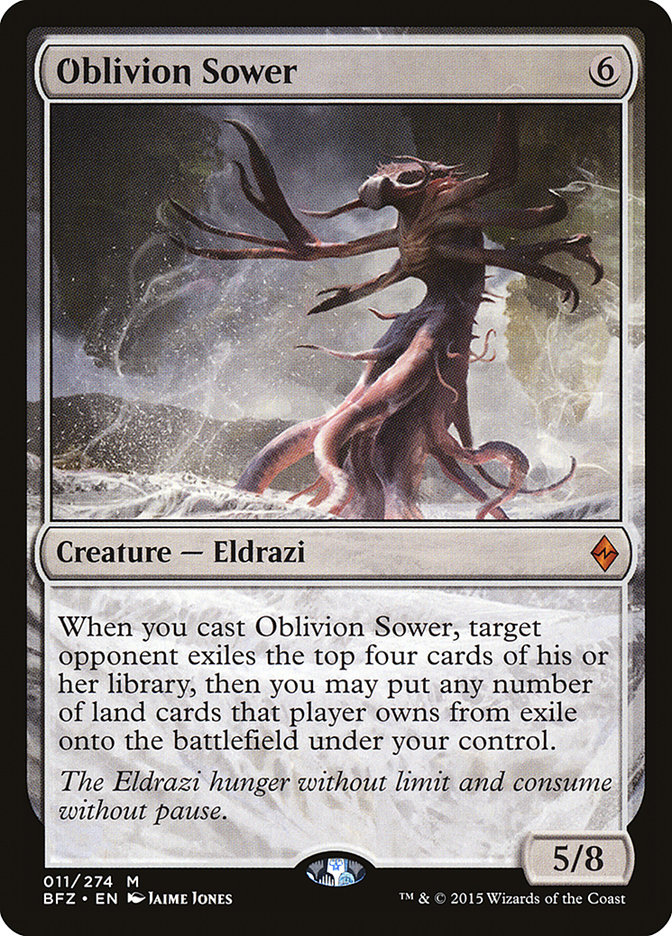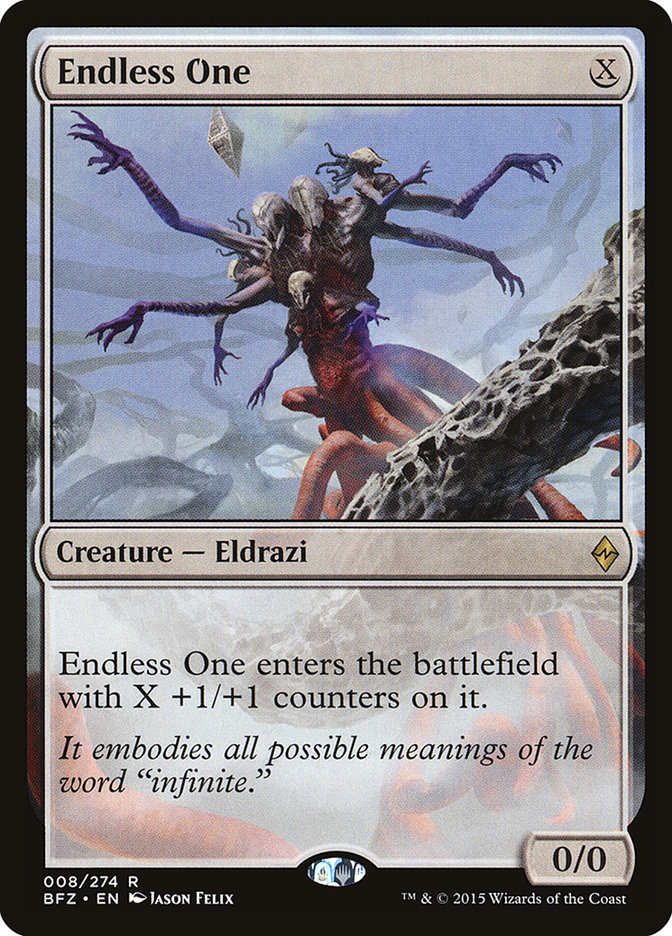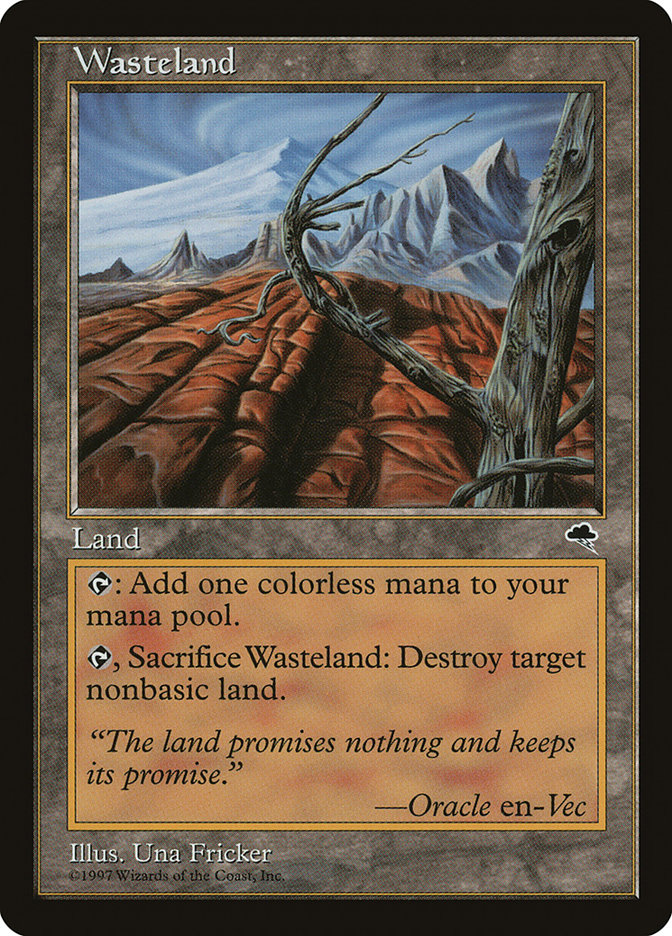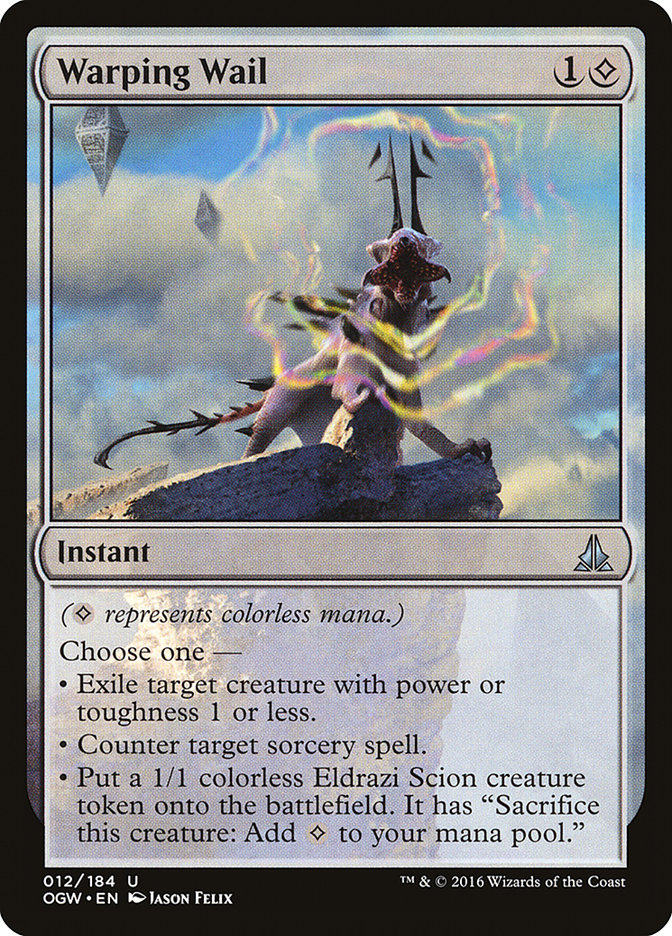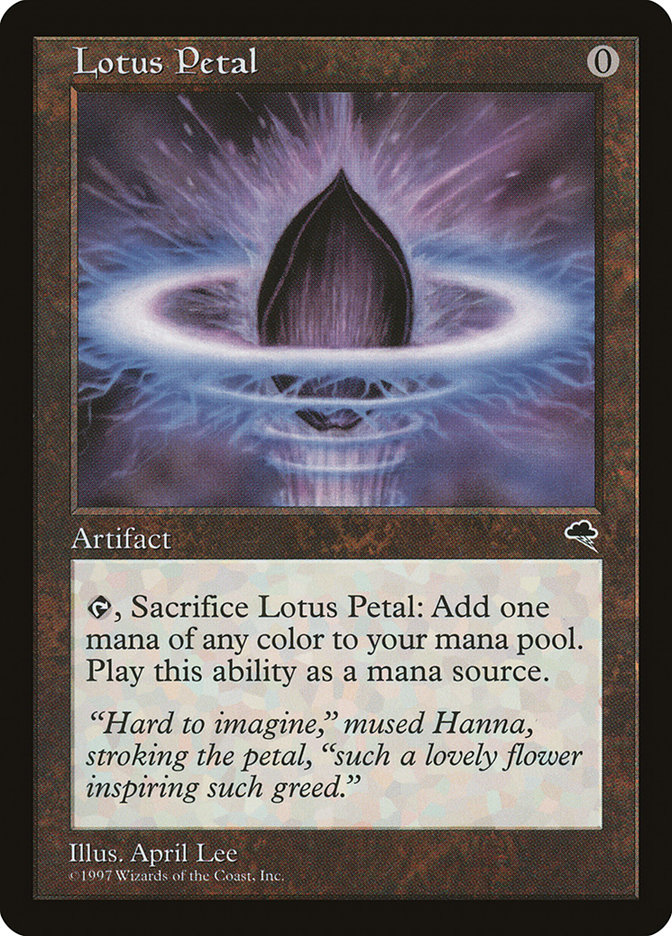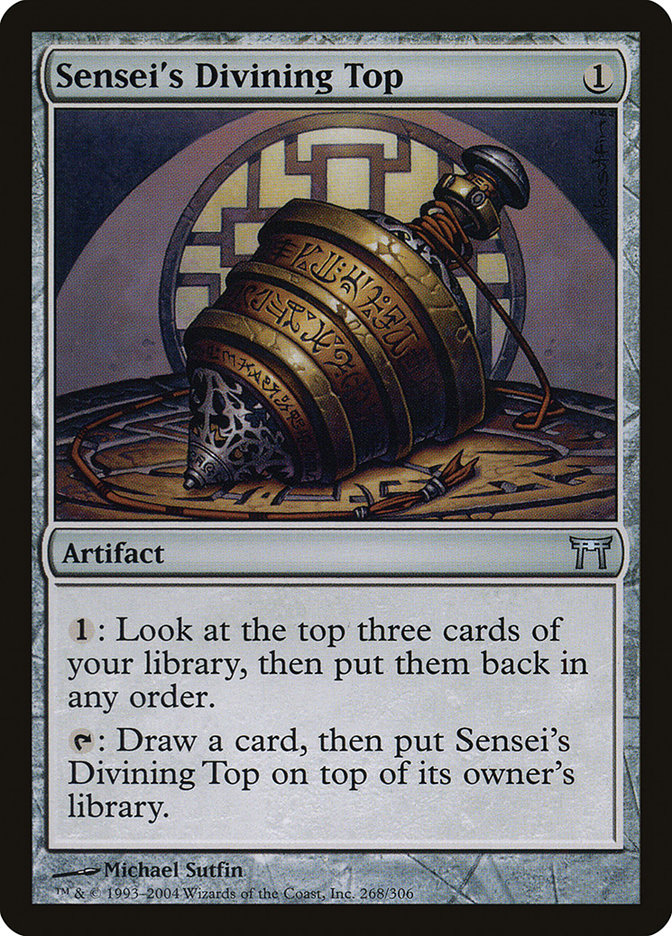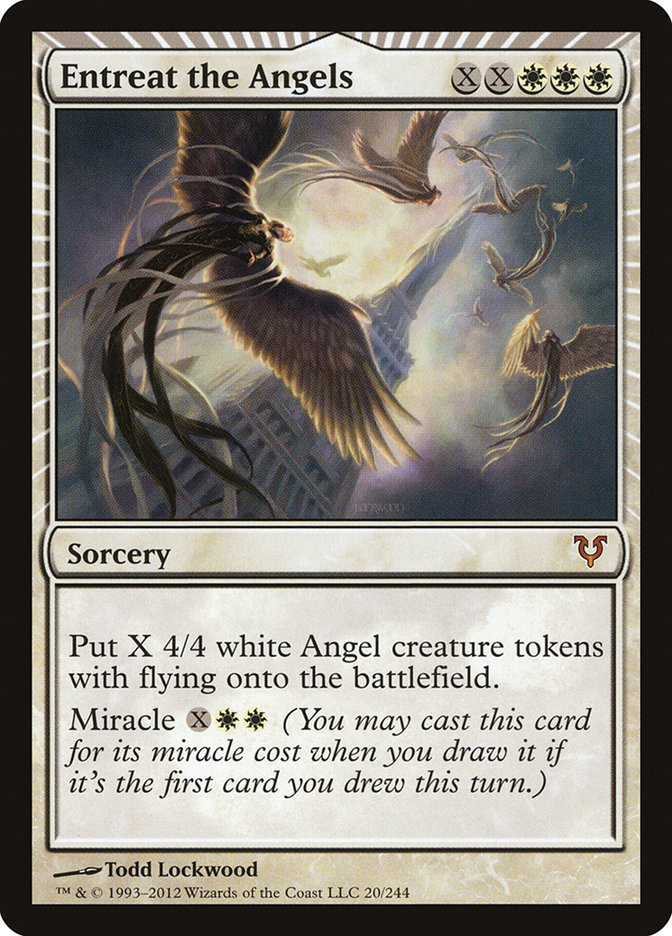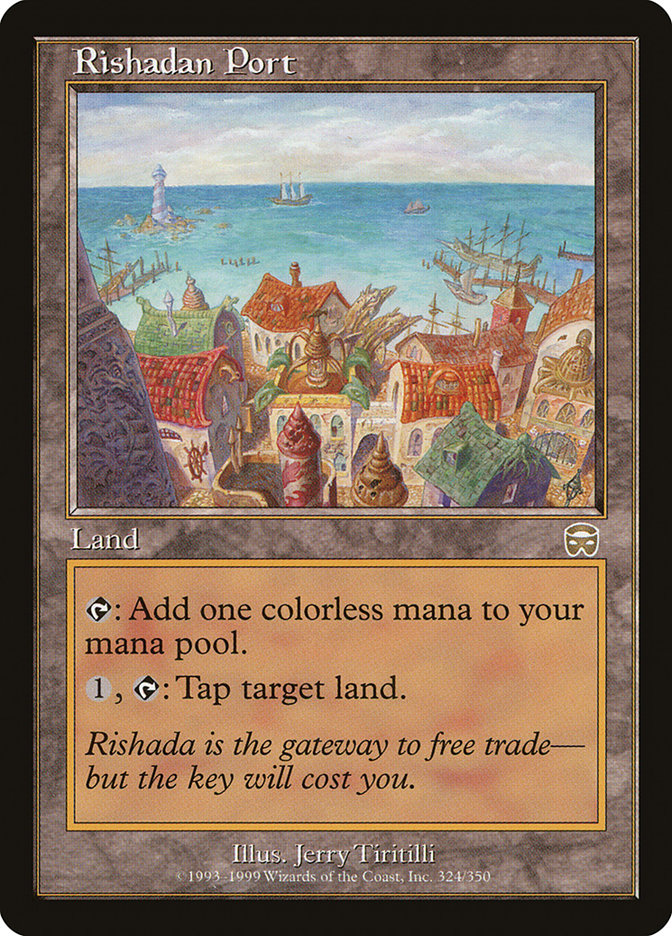 Dark Rituals.
Dark Rituals.
However, I am in real need of Pro Points right now and I am not qualified for the next Pro Tour, so I ultimately made the more prudent decision to fly to Houston. It helped that Standard is in an interesting place right now, so exploring the format would also be fun.
Still, I was disappointed to miss out on a rare opportunity to play Legacy, not to mention the Reading Terminal Market, at least until I came to a scary revelation:
The Eldrazi are coming to Legacy.
Having been public enemy number one in Modern since the last Pro Tour, it is only natural that they’d have players exploring them in Legacy, especially because they make excellent use of the following cards:
This is not good for our hero, Tendrils of Agony.
Ancient Tomb and City of Traitors have most recently been seen powering out Show and Tell and Sneak Attack as part of one of Legacy’s premier combo decks, but they have a longer history than that in the format. In the early days of Legacy, these lands were part of a disruptive aggro deck known as Sea Stompy that looked to “cheat” a Sea Drake onto the battlefield on the first turn using a two-mana land along with Chrome Mox, since not having the full two targets for Sea Drake’s trigger meant you did not have to return anything.
With similarly undercosted blue threats, Chalice of the Void, and Force of Will, the deck was a staple in the earliest days of Legacy, eventually spawning a number of Chalice-Aggro variants. While playing undercosted creatures below curve was appealing, the biggest draw to these decks was their ability to power out a turn 1 Chalice of the Void, which is excellent in a format driven by powerful one-mana spells.
With the Eldrazi lands added to the fold, you can now play the incredibly powerful Thought-Knot Seer and Reality Smasher in this shell and also gain the explosive Eye of Ugin draws to race decks, even when you do not draw a Chalice.
In case any of you were still skeptical, here are some recent Legacy League results from Magic Online:
Creatures (18)
- 2 Phyrexian Metamorph
- 2 Conduit of Ruin
- 2 World Breaker
- 4 Eldrazi Displacer
- 4 Reality Smasher
- 4 Thought-Knot Seer
Lands (25)
Spells (17)
- 2 Umezawa's Jitte
- 1 Trinisphere
- 3 Talisman of Unity
- 2 Mox Diamond
- 4 Chalice of the Void
- 2 All Is Dust
- 3 Warping Wail
Sideboard

Creatures (21)
Lands (25)
Spells (14)

The Eldrazi aren’t coming. They are already here.
These lists play out similarly to the original list Team CFB/FtF championed at #PTOGW, which is more fitting to combat the Legacy format than the more creature-heavy and disruption-light lists we have seen since. Overall these lists are about what I had expected, with a few notable exceptions:
I am somewhat surprised by the near-complete lack of Trinisphere in these lists, although it is certainly possible that Thorn of Amethyst is better, given its similar impact on turn 1, the fact that it is easier to cast, and how well it works in multiples. Still, especially in lists that play additional acceleration like Simian Spirit Guide or Mox Diamond, I would like to see the powerful artifact take up more slots alongside Thorn. Your best draws involve a strong disruptive artifact on turn 1, so having seven to ten of them in your maindeck is perfectly reasonable.
I am not impressed by Eldrazi Displacer. Legacy is so fast and powerful that taking over with its ability in an end-game scenario will be rare, and its immediate impact is low. The second list will even have trouble casting it, given the presence of only seven white sources. With the power of the disruption in the deck, I would focus on playing the creatures that kill my opponent as quickly and efficiently as possible. You simply do not have time to mess around with cute interactions. Open a window of opportunity and get them dead.
What I like about these lists is that they represent the two directions you can take this deck, the first being more of a midrange-ramp shell and the second more aggressive. In building the first, we should take our cues from the existing Metalworker archetype that powers out large artifact threats with its namesake, as well as a card that I think would fit well into this shell: Grim Monolith.
Grim Monolith provides valuable colorless mana and lets you jump the curve to three mana on turn 1 fairly often, making Trinisphere that much better. It also enables turn 2 Reality Smashers to apply a ton of pressure as a follow-up to Chalice of the Void. Here is how I would build such a list:
Creatures (18)
- 1 Kozilek, Butcher of Truth
- 4 Oblivion Sower
- 1 Ulamog, the Ceaseless Hunger
- 4 Endless One
- 4 Reality Smasher
- 4 Thought-Knot Seer
Lands (25)
Spells (19)
Sideboard

With Grim Monolith, you can afford to go bigger than Reality Smasher, at which point Oblivion Sower can bridge the gap to even more powerful Eldrazi, giving this deck a strong end-game in case our opponent can fight through the deck’s disruption.
Endless One is the most borderline card here, but I wanted something that would preserve some of the explosive potential for the deck without being a poor topdeck like Eldrazi Mimic. Still, the potential of Mimic could make it better here, and I could also see Phyrexian Revoker being maindeck-worthy, especially with the amount of Miracles floating around.
It may seem strange to not see Wasteland in this deck, given how well it plays with Thorn and Trinisphere, but for the most part, I think this deck would rather keep all its lands on the battlefield and get to its powerful spells as quickly as possible; hence the presence of Crystal Vein. To that end, I could see trying to support more copies of Mox Diamond, especially since it can make use of excess copies of both Eye of Ugin and Urborg, Tomb of Yawgmoth, but your other lands are so important and mostly make two mana that I fear being flooded with subpar Moxen too often. (And yes, I understand the absurdity of that statement)
The sideboard is definitely a work in progress and mostly exists to demonstrate some of the options available to you. Warping Wail counters a lot of important cards in Legacy, notably Glimpse of Nature, Show and Tell, and Terminus, as well as dealing with some utility creatures. I prefer Tormod’s Crypt as a graveyard hate card so as to not interfere with Chalice of the Void, and the deck closes games quickly enough that you do not need the extra value of Relic of Progenitus.
One hole that exists in this list is certainly the Lands matchup, where Maze of Ith and Wasteland can be problematic, as can a fast combo draw, so if you are interested in working on this list, I would start there. Pithing Needle is a good option there to stop utility lands, especially since you are aiming to land a Chalice on two to stop Life from the Loam.
While the power of the ramp shell is appealing, I am, to the surprise of approximately no one, more excited by the aggressively slanted lists. The powerful artifact disruption is best paired with a strong clock, which not only makes the disruption more effective but can steal games in which you are forced to race.
Creatures (24)
- 4 Simian Spirit Guide
- 4 Endless One
- 4 Eldrazi Mimic
- 4 Reality Smasher
- 4 Thought-Knot Seer
- 4 Matter Reshaper
Lands (24)
Spells (12)
Sideboard

In making the deck more aggressive, I wanted to have access to Dismember to help deal with Tarmogoyfs, and the decreased acceleration makes Trinisphere less reliable. We also see the inclusion of Mishra’s Factory for a bit of added threat density. Once again, I could see maindeck Phyrexian Revoker being quite good here if one of the Eldrazi underperforms, but to start, I would try to push the theme of the deck as far as possible and increase the power of Eye of Ugin.
The new card in the sideboard, Umezawa’s Jitte, should dominate creature matchups, but once again, the sideboard is very much a work in progress.
If you really want everyone to hate you, you could try splashing red for Blood Moon, either in the main or as a surprise weapon from the sideboard. It may seem strange to turn off all your powerful lands, but when your opponent can’t do much of anything, your Mountains will suffice. However, adding Blood Moon would require some serious concessions to the mana to get enough red sources into the deck. Magus of the Moon is likely better in that case, since Cavern can still cast it and Chalice protects the Magus from potential Lightning Bolts.
Fighting the Eldrazi
Surely you are not the horrible kind of person that wants the Eldrazi to take over every format, so now that I have examined the possibilities of Eldrazi in Legacy, the real question is how we should prepare for the invasion. Legacy is the last bastion of hope in this crazy, alien-controlled world we find ourselves in, and I’ll be damned if I let it be run over. The format is large and powerful enough that there are plenty of possible avenues to attack the deck.
The first step is to insulate yourself from Chalice of the Void. This means that decks like Delver, Storm, and Elves are significantly worse options, which means it’s probably good that I am not going to Philadelphia.
In fact, most combo decks get a lot worse in the presence of all this disruption, with the exception of Sneak and Show (which can power through it with its own mana acceleration). You are still going to lose to an early Chalice or Thorn with your slower draws, but having Force of Will is great for opening the window for a turn 2 or 3 combo if you do not have the necessary mana to power through their artifacts.
As far as fair deck options, I see three decks that should have a good chance in the matchup.
The first is Miracles. Once again, you can be vulnerable to an early Chalice, but if you are able to land a Sensei’s Divining Top beforehand, you can mitigate a lot of its potency. Terminus is a great card in the matchup, as is Jace. You are one of the few decks that can play a normal, interactive game of Magic and hold your own. That is not something the Eldrazi deck is preparing for, since it wants to create a soft-lock for long enough to end the game with its creatures. With no sources of card advantage and a high number of mana sources to power its early game, Eldrazi should falter if the game goes long, which is exactly what Miracles is built to do.
But a world where Miracles is on the side of good is not one I want to live in, so the next option I see is Lands. I mentioned this deck earlier as something to look out for from the Eldrazi side, and for good reason. The combination of Wasteland and Rishadan Port can let you stifle the Eldrazi deck’s mana while Maze of Ith mops up a big threat. You also have the capability of racing them with Dark Depths + Thespian’s Stage, a combo that can be executed through their disruption. Lands is well-equipped to deal with a Chalice of the Void in the post-sideboard games and should be able to set up a dominating end-game with Life from the Loam.
The last class of decks I would look into is “fair midrange,” most notably Shardless Sultai and Jund. Both of them are well-equipped to play through Chalice and have the discard and removal necessary to keep the Eldrazi deck in check and force it to play fairly.
Once in that fair game, Tarmogoyf can trump the battlefield while you gain a lot of incremental advantage until the Eldrazi deck floods out. These decks have fallen out of favor recently, but if Eldrazi suppresses combo decks, then the metagame will shift favorably for them. Tune your deck carefully with the Eldrazi in mind and you can have success.
For those of you attending the #SCGPHILLY, do not let the Eldrazi take you by surprise. And please keep them out of the Top 8. This is our common cause. We cannot afford to fail, or all hope will be lost.

